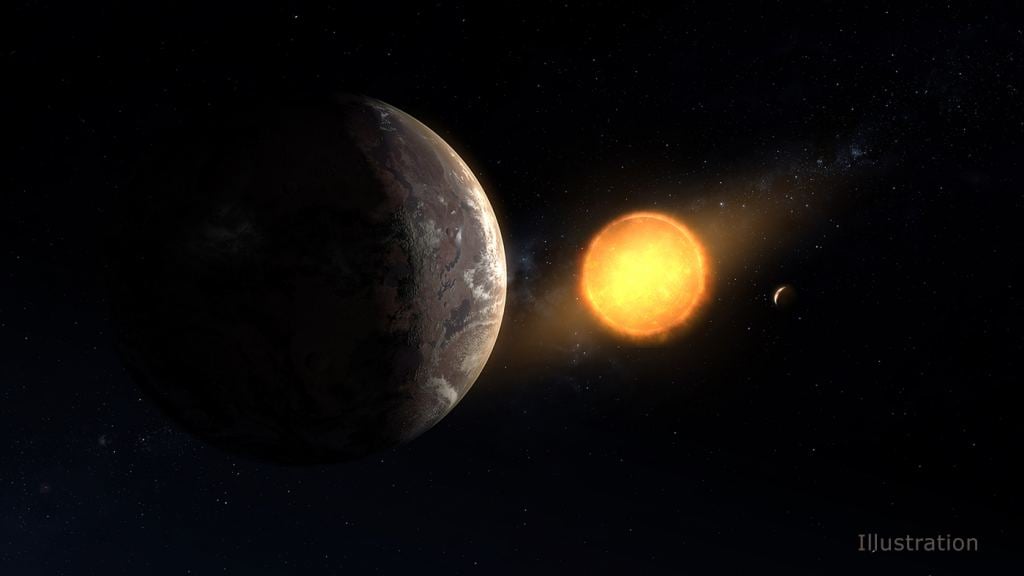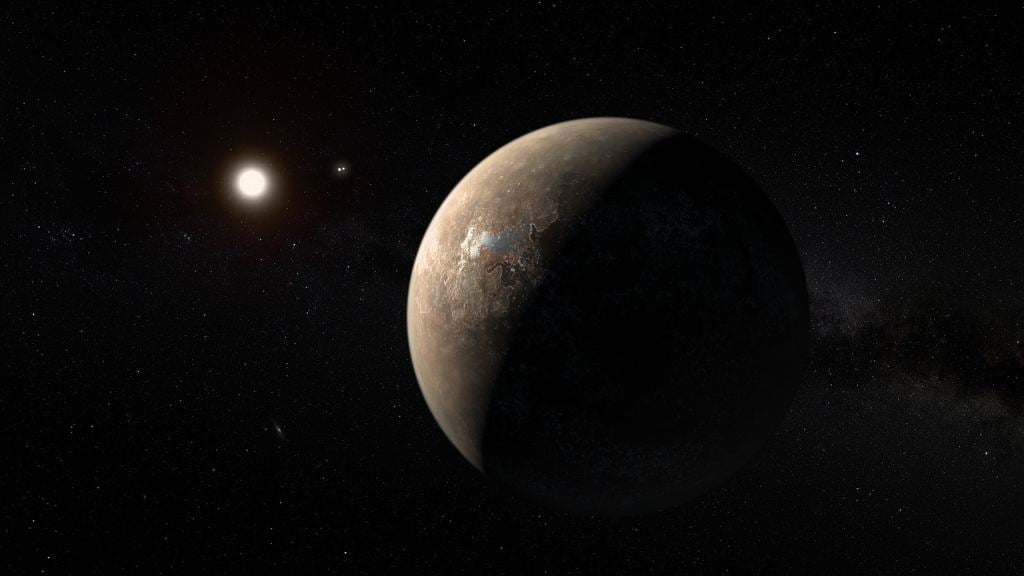The question of whether or not red dwarf stars can support habitable planets has been subject to debate for decades. With the explosion in exoplanet discoveries in the past two decades, the debate has become all the more significant. For starters, M-type (red dwarf) stars are the most common in the Universe, accounting for 75% of the stars in our galaxy. Additionally, exoplanet surveys indicate that red dwarfs are particularly good at forming Earth-like rocky planets that orbit within their circumsolar habitable zones (CHZs).
Unfortunately, a considerable body of research has shown that planets orbiting red dwarf suns would be subject to lots of flare activity - including some so powerful they're known as " superflares." In a recent study led by the University of Hawai'i, a team of astrophysicists revealed that red dwarf stars can produce stellar flares with significantly more far-ultraviolet radiation than previously expected. Their findings could have drastic implications for exoplanet studies and the search for extraterrestrial life on nearby rocky planets.
The study was led by Vera L Berger, a Churchill Scholar and graduate student researcher currently at the University of Cambridge's Cavendish Laboratory, formerly with the University of Hawai‘i's Institute for Astronomy (UHIfA). She was joined by colleagues from UHIfA, the Center for Cosmology and Astroparticle Physics (CCAP) at Ohio State University, and the Sydney Institute for Astronomy (SIfA). Their findings appeared in a paper titled " Stellar flares are far-ultraviolet luminous," which was recently published in the *Monthly Notices of the Royal Astronomical Society*.
In recent years, the debate regarding red dwarf habitability has focused on two major areas: tidal locking and flare activity. The former arises from the fact that rocky planets orbiting a red dwarf star's CMZ are close enough that their rotation is perfectly timed with their orbit, meaning that one side is constantly facing toward the star. This also means that the sun-facing side would be subject to powerful solar flares, which are very with cooler, low-mass M-type stars. In the past, research has shown that a planet subjected to this powerful flare activity would likely be stripped of its atmosphere.
However, other research has indicated that planets with a magnetic field and a sufficiently dense atmosphere could still support life. Moreover, recent research has demonstrated that red dwarfs emit their most powerful flares (aka. "superflares") from their poles, thus sparing the planets that orbit them. For their study, Berger and her team used archival data from NASA's Galaxy Evolution Explorer (GALEX) - a UV space telescope decommissioned in 2013. Using new computational techniques, the team searched this data for evidence of flares from 300,000 nearby stars.
Overall, they detected 182 flares from 158 stars within about 326 light-years (100 parsecs) of the Sun in the near-ultraviolet (NUV) and far-ultraviolet (FUV) wavelengths. These results challenge existing models of stellar flares and exoplanet habitability, which predict that flares will produce more NUV than FUV radiation. However, their observations showed that the distribution of FUV radiation was three times more energetic (on average) and up to twelve times what current models predict. As Bergin explained in a recent UH press release:
"Few stars have been thought to generate enough UV radiation through flares to impact planet habitability. Our findings show that many more stars may have this capability... Our work puts a spotlight on the need for further exploration into the effects of stellar flares on exoplanetary environments. Using space telescopes to obtain UV spectra of stars will be crucial for better understanding the origins of this emission."
On Earth, ultraviolet radiation has been vital to the development of life as we know it. Whereas near-UV (UV-A, 400 nm to 300 nm) plays an essential role in the formation of Vitamin D by the skin, prolonged exposure can lead to sunburn, increased risk of melanoma, and cataracts. Middle wavelength UV (UV-B, 300 to 200 nm) can cause damage at the molecular level, affecting deoxyribonucleic acid (DNA), the very building blocks of life. Thanks to Earth's magnetic field and dense atmosphere, very little UV light below 290 nm reaches the surface.
However, as the team indicates in their study, exposure to Far-UV (200 nm to 10 nm) produced by stellar flares could severely impact planetary habitability, from eroding a planet's atmosphere to threatening the formation of RNA building blocks. "A change of three is the same as the difference in UV in the summer from Anchorage, Alaska to Honolulu, where unprotected skin can get a sunburn in less than 10 minutes," said co-author Benjamin J. Shappee from the University of Hawai'i.
While the exact cause of these stronger FUV emissions is unclear, the team believes that flare radiation could be concentrated at specific wavelengths, possibly due to elements like carbon and nitrogen in the star's composition. They emphasize that more data is needed to determine the source of these emissions and to gain a better understanding of red dwarf UV luminosity. These findings could indicate that most stars in our galaxy cannot support life (as we know it), which could have drastic implications for astrobiology and might even be a possible answer to Fermi's Paradox!
Further Reading: University of Hawai'i*, MNRAS*
 Universe Today
Universe Today


